
langtrace
Langtrace 🔍 is an open-source, Open Telemetry based end-to-end observability tool for LLM applications, providing real-time tracing, evaluations and metrics for popular LLMs, LLM frameworks, vectorDBs and more.. Integrate using Typescript, Python. 🚀💻📊
Stars: 856
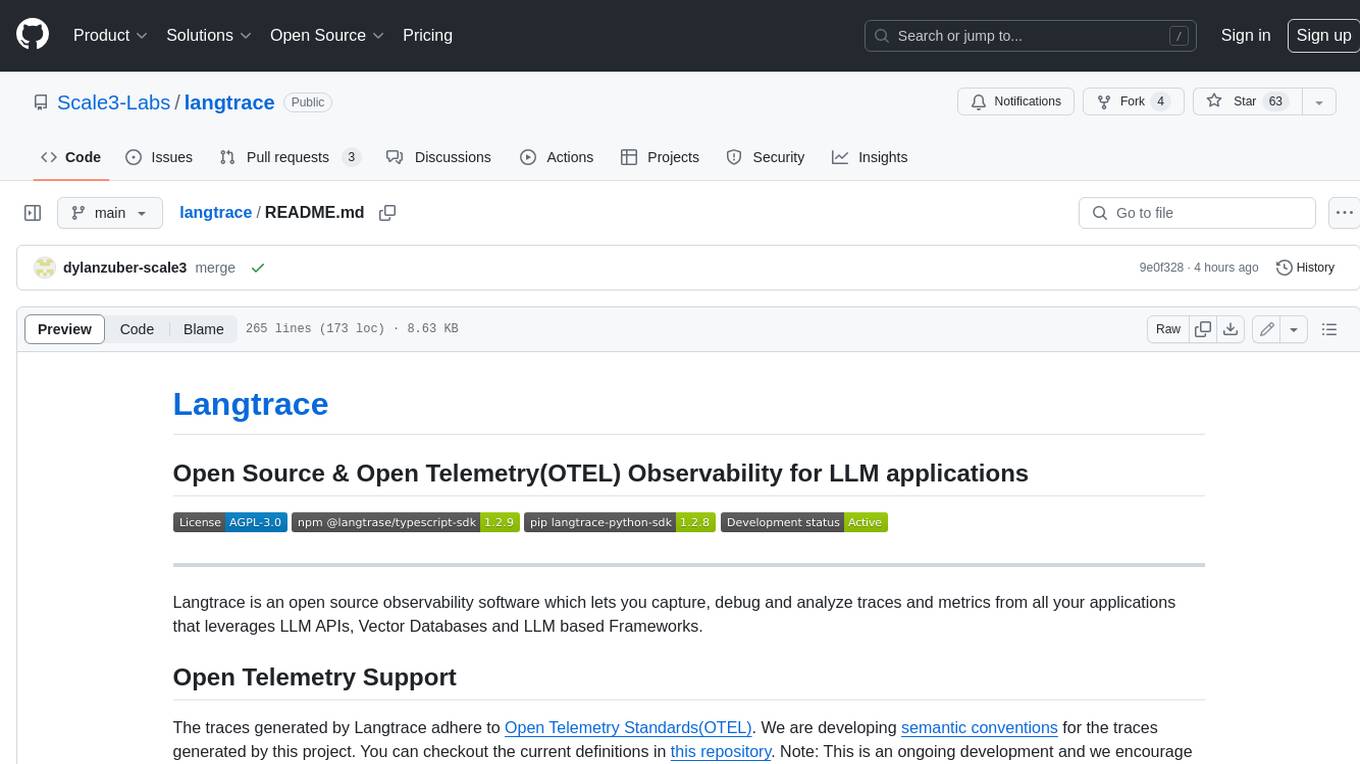
Langtrace is an open source observability software that lets you capture, debug, and analyze traces and metrics from all your applications that leverage LLM APIs, Vector Databases, and LLM-based Frameworks. It supports Open Telemetry Standards (OTEL), and the traces generated adhere to these standards. Langtrace offers both a managed SaaS version (Langtrace Cloud) and a self-hosted option. The SDKs for both Typescript/Javascript and Python are available, making it easy to integrate Langtrace into your applications. Langtrace automatically captures traces from various vendors, including OpenAI, Anthropic, Azure OpenAI, Langchain, LlamaIndex, Pinecone, and ChromaDB.
README:
- ✨ Features
- 🚀 Quick Start
- 🔗 Integrations
- 🌐 Getting Started
- 🏠 Self Hosting
- 📐 Architecture
- 🤝 Contributing
- 🔒 Security
- ❓ FAQ
- 👥 Contributors
- 📜 License
Langtrace is an open source observability software which lets you capture, debug and analyze traces and metrics from all your applications that leverages LLM APIs, Vector Databases and LLM based Frameworks.
- 📊 Open Telemetry Support: Built on OTEL standards for comprehensive tracing
- 🔄 Real-time Monitoring: Track LLM API calls, vector operations, and framework usage
- 🎯 Performance Insights: Analyze latency, costs, and usage patterns
- 🔍 Debug Tools: Trace and debug your LLM application workflows
- 📈 Analytics: Get detailed metrics and visualizations
- 🏠 Self-hosting Option: Deploy on your own infrastructure
# For TypeScript/JavaScript
npm i @langtrase/typescript-sdk
# For Python
pip install langtrace-python-sdkInitialize in your code:
// TypeScript
import * as Langtrace from '@langtrase/typescript-sdk'
Langtrace.init({ api_key: '<your_api_key>' }) // Get your API key at langtrace.ai# Python
from langtrace_python_sdk import langtrace
langtrace.init(api_key='<your_api_key>') # Get your API key at langtrace.aiFor detailed setup instructions, see Getting Started.
The traces generated by Langtrace adhere to Open Telemetry Standards(OTEL). We are developing semantic conventions for the traces generated by this project. You can checkout the current definitions in this repository. Note: This is an ongoing development and we encourage you to get involved and welcome your feedback.
To use the managed SaaS version of Langtrace, follow the steps below:
- Sign up by going to this link.
- Create a new Project after signing up. Projects are containers for storing traces and metrics generated by your application. If you have only one application, creating 1 project will do.
- Generate an API key by going inside the project.
- In your application, install the Langtrace SDK and initialize it with the API key you generated in the step 3.
- The code for installing and setting up the SDK is shown below:
npm i @langtrase/typescript-sdkimport * as Langtrace from '@langtrase/typescript-sdk' // Must precede any llm module imports
Langtrace.init({ api_key: <your_api_key> })OR
import * as Langtrace from "@langtrase/typescript-sdk"; // Must precede any llm module imports
LangTrace.init(); // LANGTRACE_API_KEY as an ENVIRONMENT variablepip install langtrace-python-sdkfrom langtrace_python_sdk import langtrace
langtrace.init(api_key=<your_api_key>)OR
from langtrace_python_sdk import langtrace
langtrace.init() # LANGTRACE_API_KEY as an ENVIRONMENT variableTo run the Langtrace locally, you have to run three services:
- Next.js app
- Postgres database
- Clickhouse database
[!IMPORTANT] Checkout our documentation for various deployment options and configurations.
Requirements:
- Docker
- Docker Compose
Feel free to modify the .env file to suit your needs.
docker compose upThe application will be available at http://localhost:3000.
To delete containers and volumes
docker compose down -v-v flag is used to delete volumes
Langtrace does NOT collect any Telemetry if you are self hosting the OSS client. None of your data leaves your servers.
Langtrace automatically captures traces from the following vendors and frameworks:
| Provider | TypeScript SDK | Python SDK |
|---|---|---|
| OpenAI | ✅ | ✅ |
| Anthropic | ✅ | ✅ |
| Azure OpenAI | ✅ | ✅ |
| Cohere | ✅ | ✅ |
| DeepSeek | ✅ | ✅ |
| xAI | ✅ | ✅ |
| Groq | ✅ | ✅ |
| Perplexity | ✅ | ✅ |
| Gemini | ✅ | ✅ |
| AWS Bedrock | ✅ | ✅ |
| Mistral | ❌ | ✅ |
| Framework | TypeScript SDK | Python SDK |
|---|---|---|
| Langchain | ❌ | ✅ |
| LlamaIndex | ✅ | ✅ |
| Langgraph | ❌ | ✅ |
| LiteLLM | ❌ | ✅ |
| DSPy | ❌ | ✅ |
| CrewAI | ❌ | ✅ |
| Ollama | ❌ | ✅ |
| VertexAI | ✅ | ✅ |
| Vercel AI | ✅ | ❌ |
| GuardrailsAI | ❌ | ✅ |
| Arch | ❌ | ✅ |
| Graphlit | ❌ | ✅ |
| Agno | ❌ | ✅ |
| Phidata | ❌ | ✅ |
| Cleanlab | ❌ | ✅ |
| Database | TypeScript SDK | Python SDK |
|---|---|---|
| Pinecone | ✅ | ✅ |
| ChromaDB | ✅ | ✅ |
| QDrant | ✅ | ✅ |
| Weaviate | ✅ | ✅ |
| PGVector | ✅ | ✅ (SQLAlchemy) |
| MongoDB | ❌ | ✅ |
| Milvus | ❌ | ✅ |
- To request for features, head over here to start a discussion.
- To raise an issue, head over here and create an issue.
We welcome contributions to this project. To get started, fork this repository and start developing. To get involved, join our Slack workspace.
To report security vulnerabilities, email us at [email protected]. You can read more on security here.
- Langtrace application(this repository) is licensed under the AGPL 3.0 License. You can read about this license here.
- Langtrace SDKs are licensed under the Apache 2.0 License. You can read about this license here.
 karthikscale3 |
 dylanzuber-scale3 |
 darshit-s3 |
 rohit-kadhe |
 yemiadej |
 alizenhom |
 obinnascale3 |
 Cruppelt |
 Dnaynu |
 jatin9823 |
 MayuriS24 |
 NishantRana07 |
 obinnaokafor |
 heysagnik |
 dabiras3 |
1. Can I self host and run Langtrace in my own cloud? Yes, you can absolutely do that. Follow the self hosting setup instructions in our documentation.
2. What is the pricing for Langtrace cloud? Currently, we are not charging anything for Langtrace cloud and we are primarily looking for feedback so we can continue to improve the project. We will inform our users when we decide to monetize it.
3. What is the tech stack of Langtrace? Langtrace uses NextJS for the frontend and APIs. It uses PostgresDB as a metadata store and Clickhouse DB for storing spans, metrics, logs and traces.
4. Can I contribute to this project? Absolutely! We love developers and welcome contributions. Get involved early by joining our Discord Community.
5. What skillset is required to contribute to this project? Programming Languages: Typescript and Python. Framework knowledge: NextJS. Database: Postgres and Prisma ORM. Nice to haves: Opentelemetry instrumentation framework, experience with distributed tracing.
For Tasks:
Click tags to check more tools for each tasksFor Jobs:
Alternative AI tools for langtrace
Similar Open Source Tools

langtrace
Langtrace is an open source observability software that lets you capture, debug, and analyze traces and metrics from all your applications that leverage LLM APIs, Vector Databases, and LLM-based Frameworks. It supports Open Telemetry Standards (OTEL), and the traces generated adhere to these standards. Langtrace offers both a managed SaaS version (Langtrace Cloud) and a self-hosted option. The SDKs for both Typescript/Javascript and Python are available, making it easy to integrate Langtrace into your applications. Langtrace automatically captures traces from various vendors, including OpenAI, Anthropic, Azure OpenAI, Langchain, LlamaIndex, Pinecone, and ChromaDB.
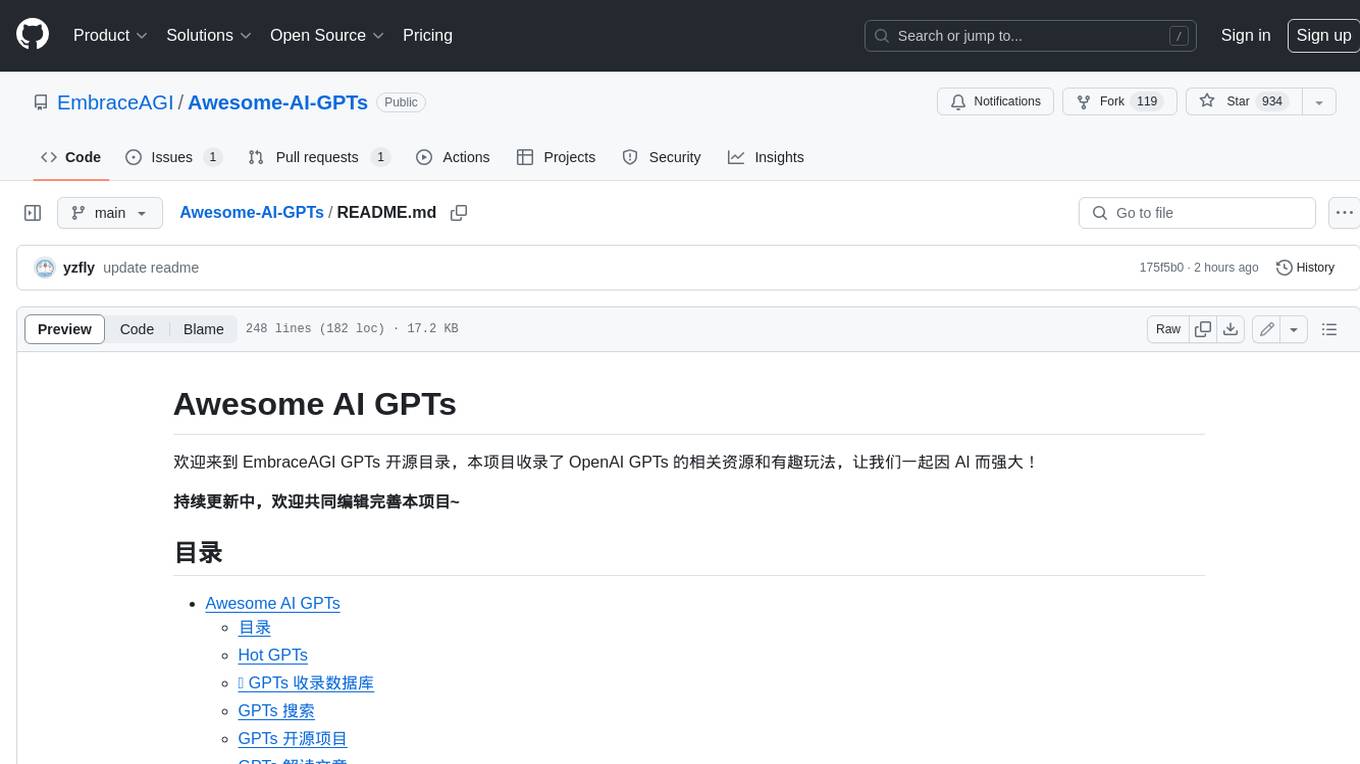
Awesome-AI-GPTs
Awesome AI GPTs is an open repository that collects resources and fun ways to use OpenAI GPTs. It includes databases, search tools, open-source projects, articles, attack and defense strategies, installation of custom plugins, knowledge bases, and community interactions related to GPTs. Users can find curated lists, leaked prompts, and various GPT applications in this repository. The project aims to empower users with AI capabilities and foster collaboration in the AI community.
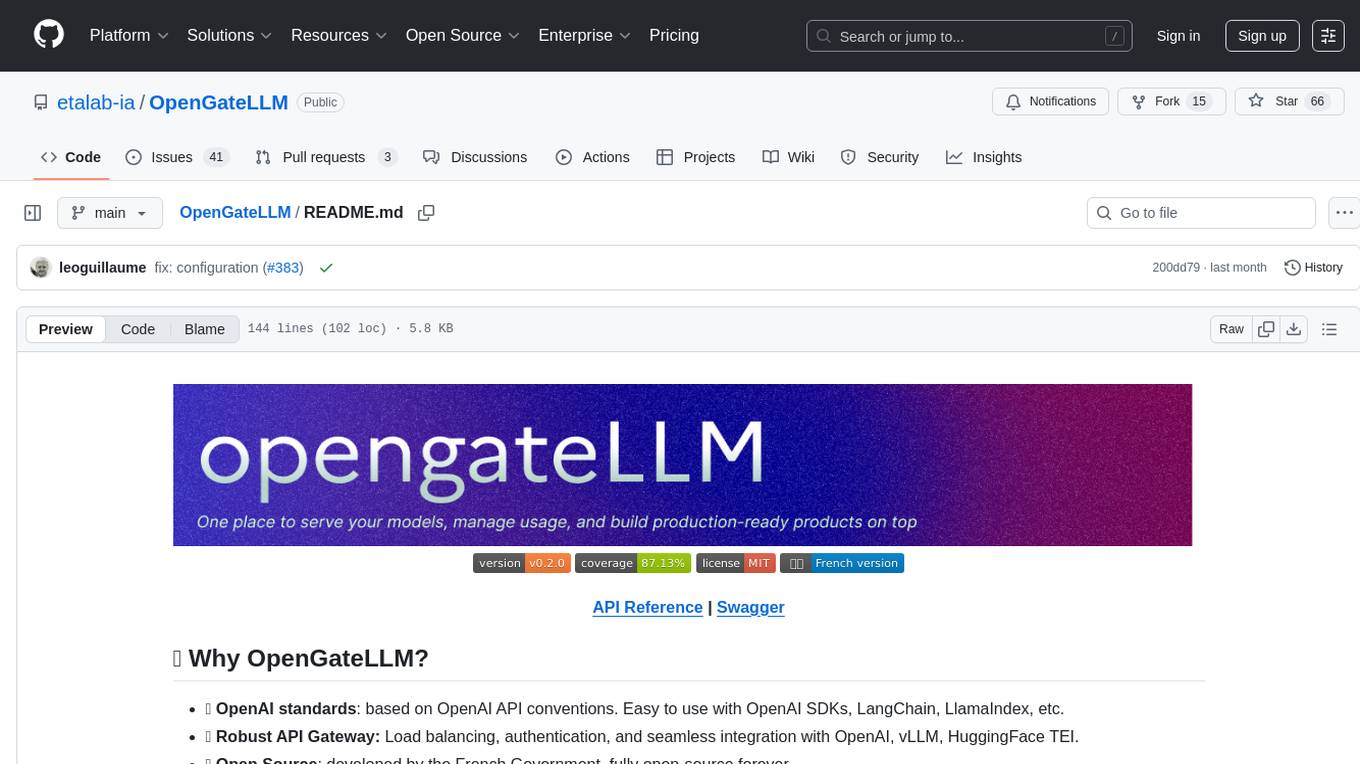
OpenGateLLM
OpenGateLLM is an open-source API gateway developed by the French Government, designed to serve AI models in production. It follows OpenAI standards and offers robust features like RAG integration, audio transcription, OCR, and more. With support for multiple AI backends and built-in security, OpenGateLLM provides a production-ready solution for various AI tasks.
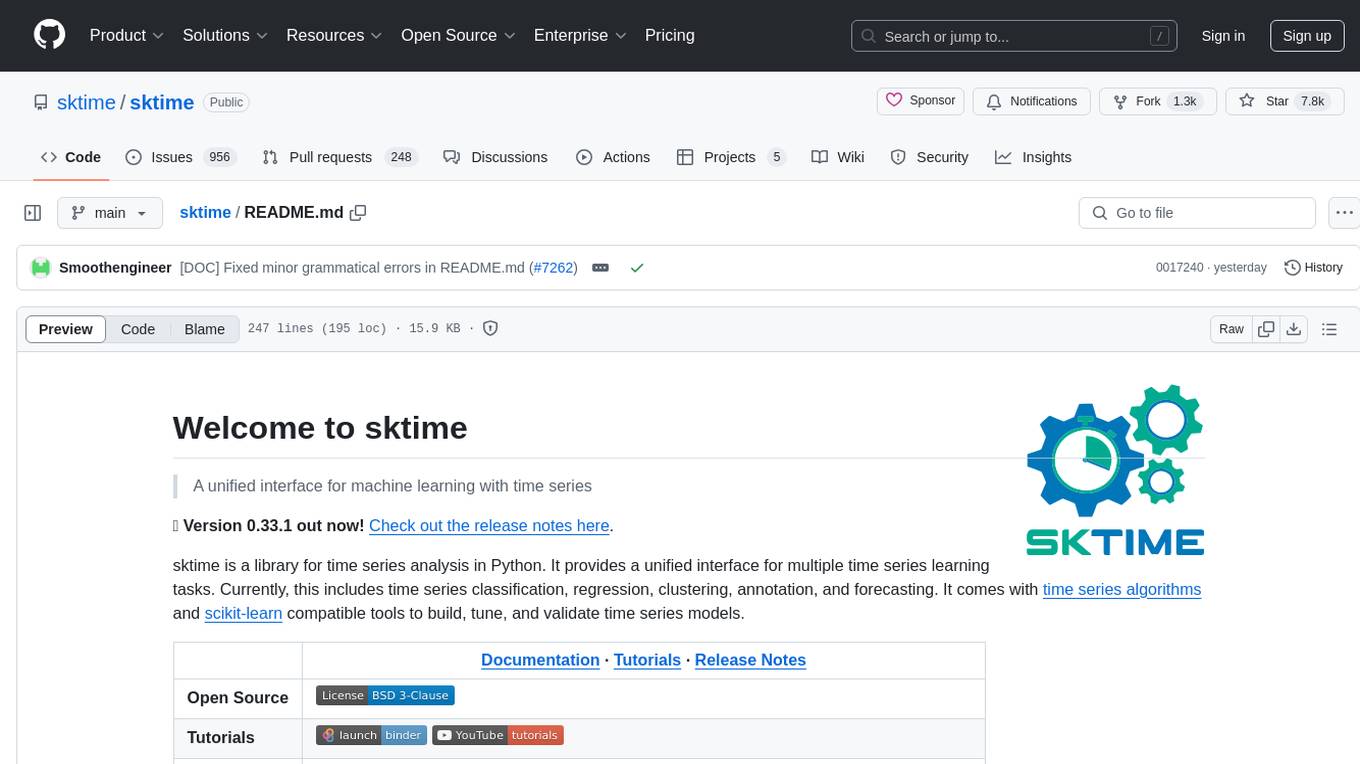
sktime
sktime is a Python library for time series analysis that provides a unified interface for various time series learning tasks such as classification, regression, clustering, annotation, and forecasting. It offers time series algorithms and tools compatible with scikit-learn for building, tuning, and validating time series models. sktime aims to enhance the interoperability and usability of the time series analysis ecosystem by empowering users to apply algorithms across different tasks and providing interfaces to related libraries like scikit-learn, statsmodels, tsfresh, PyOD, and fbprophet.

motia
Motia is an AI agent framework designed for software engineers to create, test, and deploy production-ready AI agents quickly. It provides a code-first approach, allowing developers to write agent logic in familiar languages and visualize execution in real-time. With Motia, developers can focus on business logic rather than infrastructure, offering zero infrastructure headaches, multi-language support, composable steps, built-in observability, instant APIs, and full control over AI logic. Ideal for building sophisticated agents and intelligent automations, Motia's event-driven architecture and modular steps enable the creation of GenAI-powered workflows, decision-making systems, and data processing pipelines.
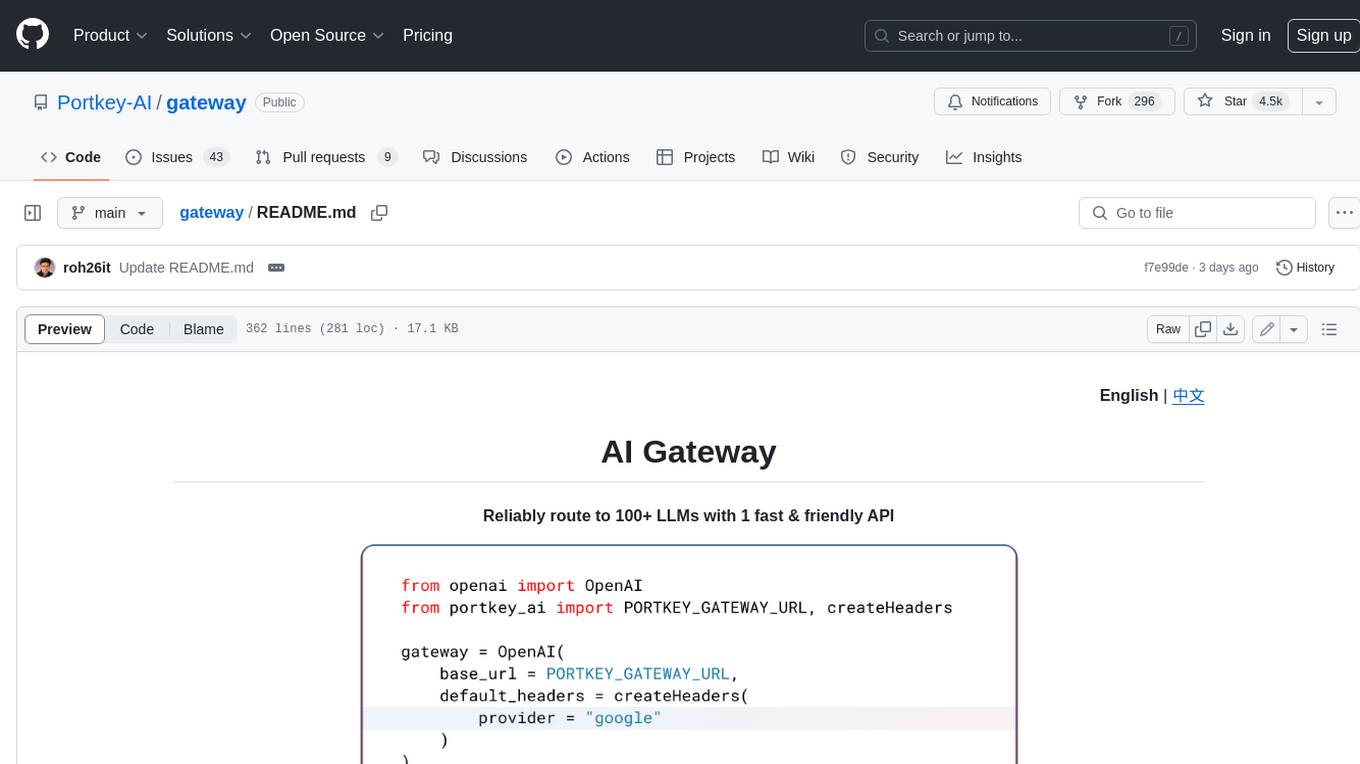
gateway
Gateway is a tool that streamlines requests to 100+ open & closed source models with a unified API. It is production-ready with support for caching, fallbacks, retries, timeouts, load balancing, and can be edge-deployed for minimum latency. It is blazing fast with a tiny footprint, supports load balancing across multiple models, providers, and keys, ensures app resilience with fallbacks, offers automatic retries with exponential fallbacks, allows configurable request timeouts, supports multimodal routing, and can be extended with plug-in middleware. It is battle-tested over 300B tokens and enterprise-ready for enhanced security, scale, and custom deployments.
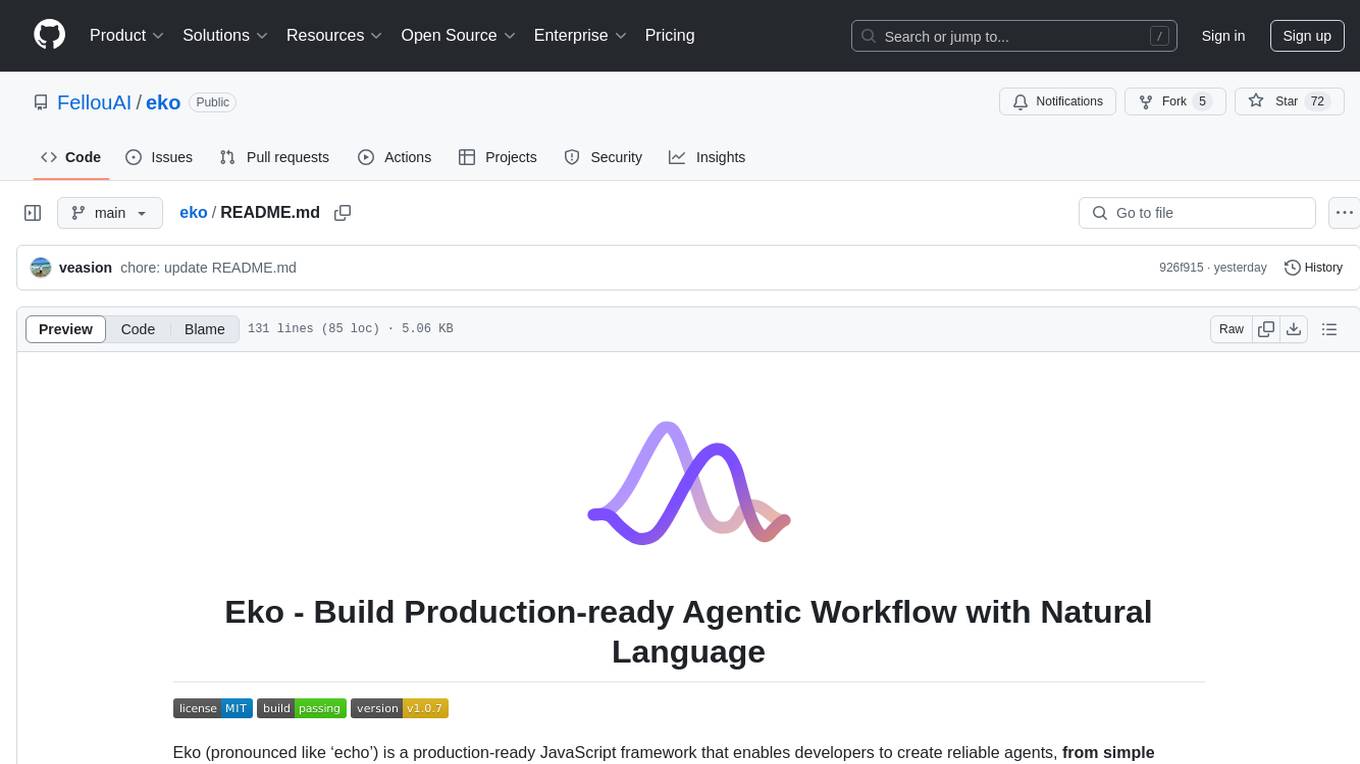
eko
Eko is a lightweight and flexible command-line tool for managing environment variables in your projects. It allows you to easily set, get, and delete environment variables for different environments, making it simple to manage configurations across development, staging, and production environments. With Eko, you can streamline your workflow and ensure consistency in your application settings without the need for complex setup or configuration files.
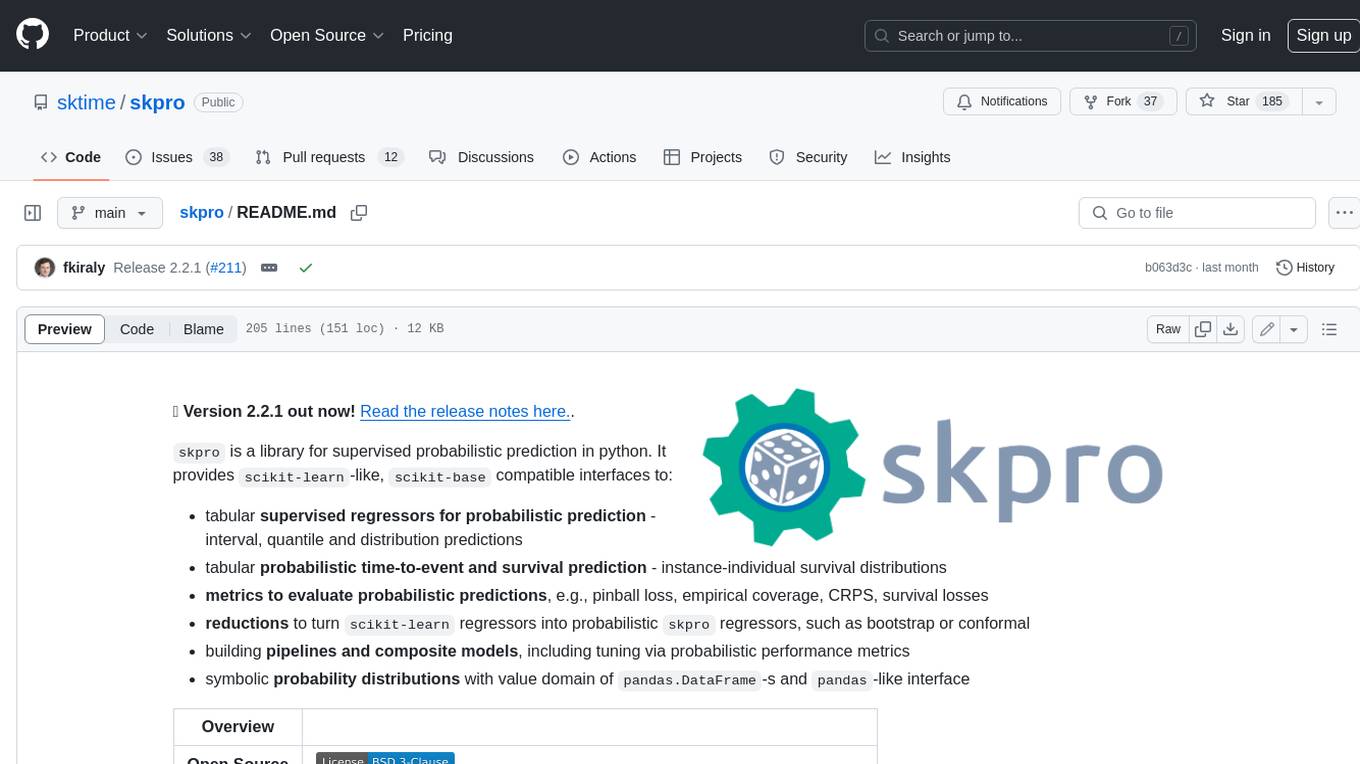
skpro
skpro is a library for supervised probabilistic prediction in python. It provides `scikit-learn`-like, `scikit-base` compatible interfaces to: * tabular **supervised regressors for probabilistic prediction** \- interval, quantile and distribution predictions * tabular **probabilistic time-to-event and survival prediction** \- instance-individual survival distributions * **metrics to evaluate probabilistic predictions** , e.g., pinball loss, empirical coverage, CRPS, survival losses * **reductions** to turn `scikit-learn` regressors into probabilistic `skpro` regressors, such as bootstrap or conformal * building **pipelines and composite models** , including tuning via probabilistic performance metrics * symbolic **probability distributions** with value domain of `pandas.DataFrame`-s and `pandas`-like interface
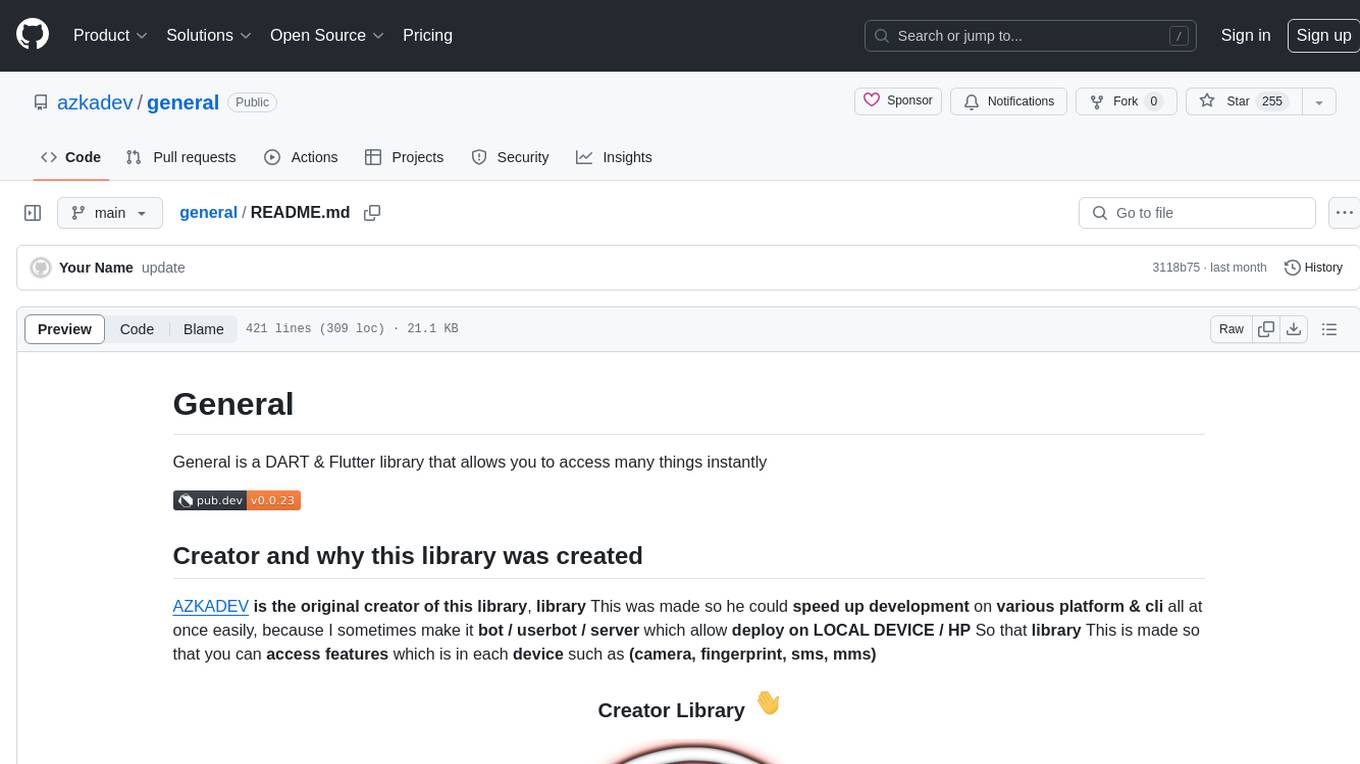
general
General is a DART & Flutter library created by AZKADEV to speed up development on various platforms and CLI easily. It allows access to features such as camera, fingerprint, SMS, and MMS. The library is designed for Dart language and provides functionalities for app background, text to speech, speech to text, and more.
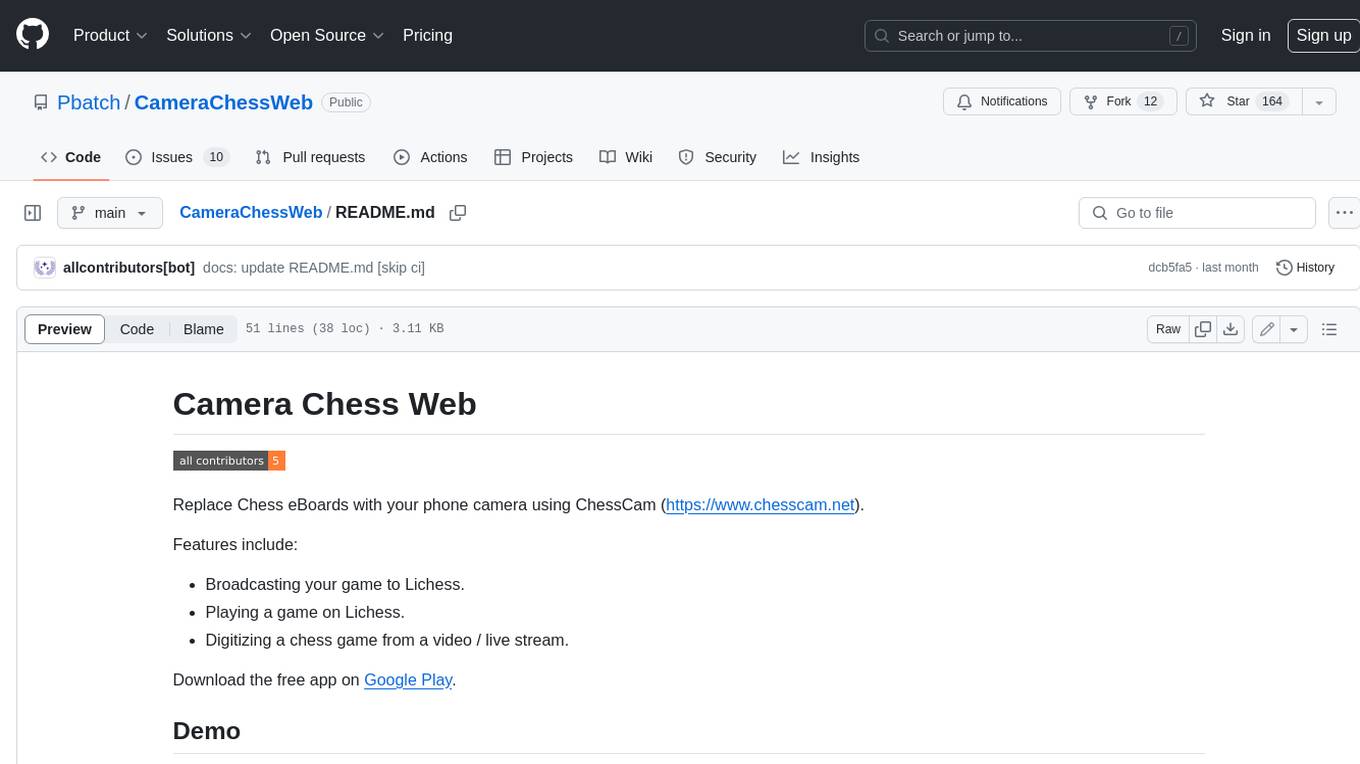
CameraChessWeb
Camera Chess Web is a tool that allows you to use your phone camera to replace chess eBoards. With Camera Chess Web, you can broadcast your game to Lichess, play a game on Lichess, or digitize a chess game from a video or live stream. Camera Chess Web is free to download on Google Play.
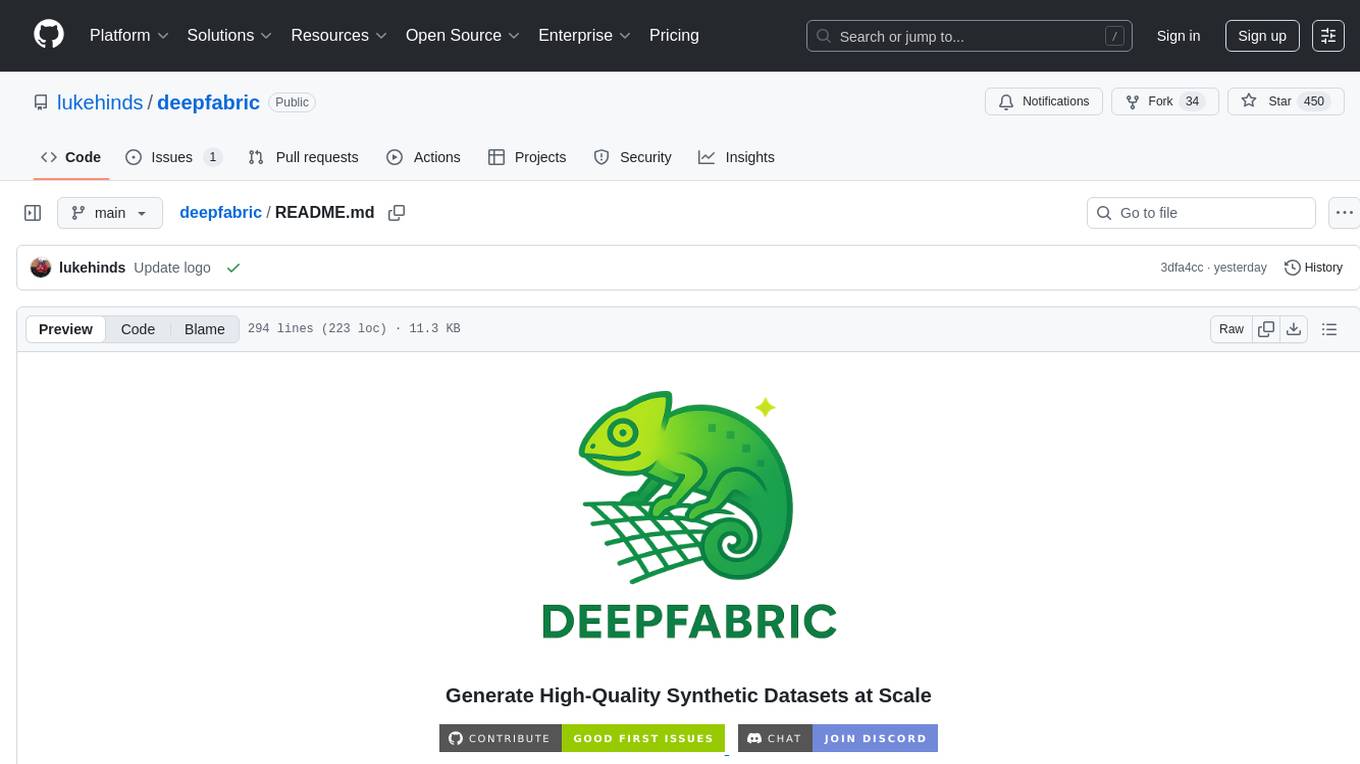
deepfabric
DeepFabric is a CLI tool and SDK designed for researchers and developers to generate high-quality synthetic datasets at scale using large language models. It leverages a graph and tree-based architecture to create diverse and domain-specific datasets while minimizing redundancy. The tool supports generating Chain of Thought datasets for step-by-step reasoning tasks and offers multi-provider support for using different language models. DeepFabric also allows for automatic dataset upload to Hugging Face Hub and uses YAML configuration files for flexibility in dataset generation.
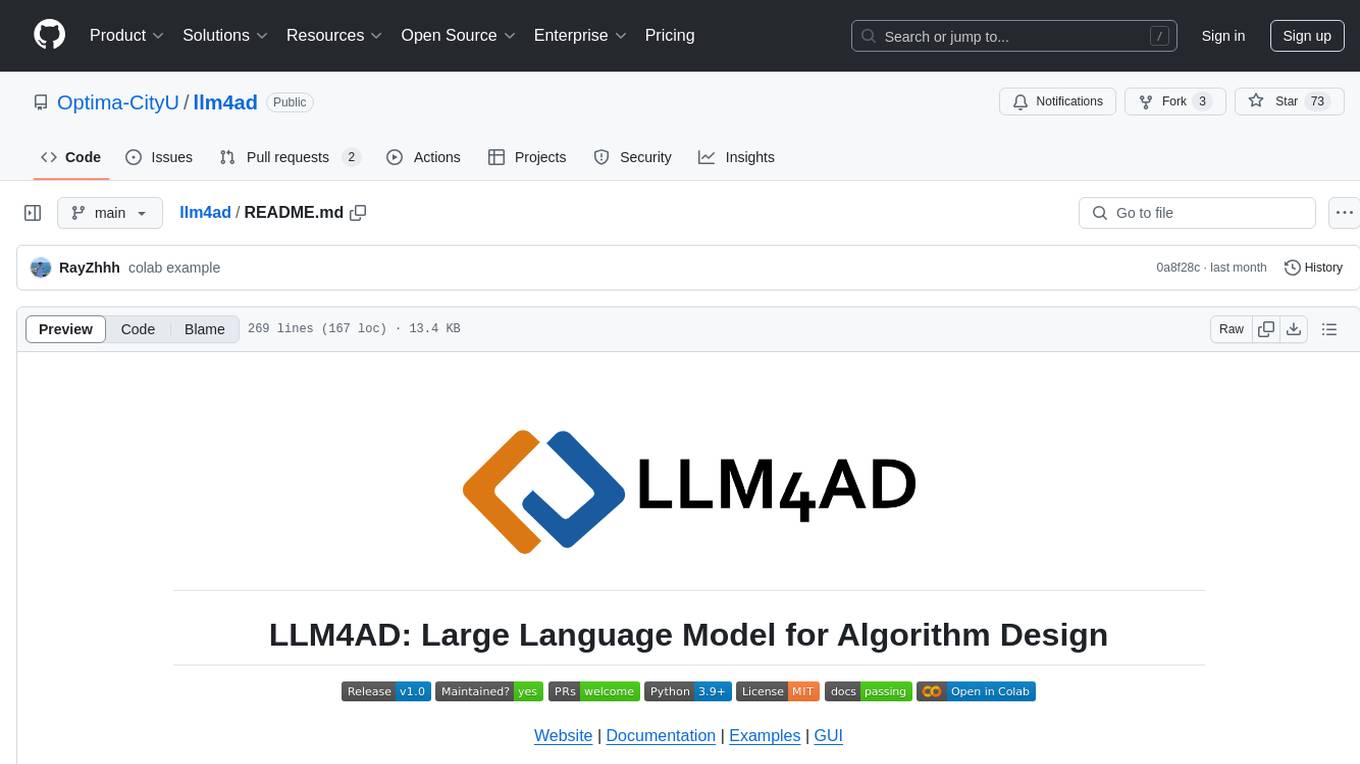
llm4ad
LLM4AD is an open-source Python-based platform leveraging Large Language Models (LLMs) for Automatic Algorithm Design (AD). It provides unified interfaces for methods, tasks, and LLMs, along with features like evaluation acceleration, secure evaluation, logs, GUI support, and more. The platform was originally developed for optimization tasks but is versatile enough to be used in other areas such as machine learning, science discovery, game theory, and engineering design. It offers various search methods and algorithm design tasks across different domains. LLM4AD supports remote LLM API, local HuggingFace LLM deployment, and custom LLM interfaces. The project is licensed under the MIT License and welcomes contributions, collaborations, and issue reports.
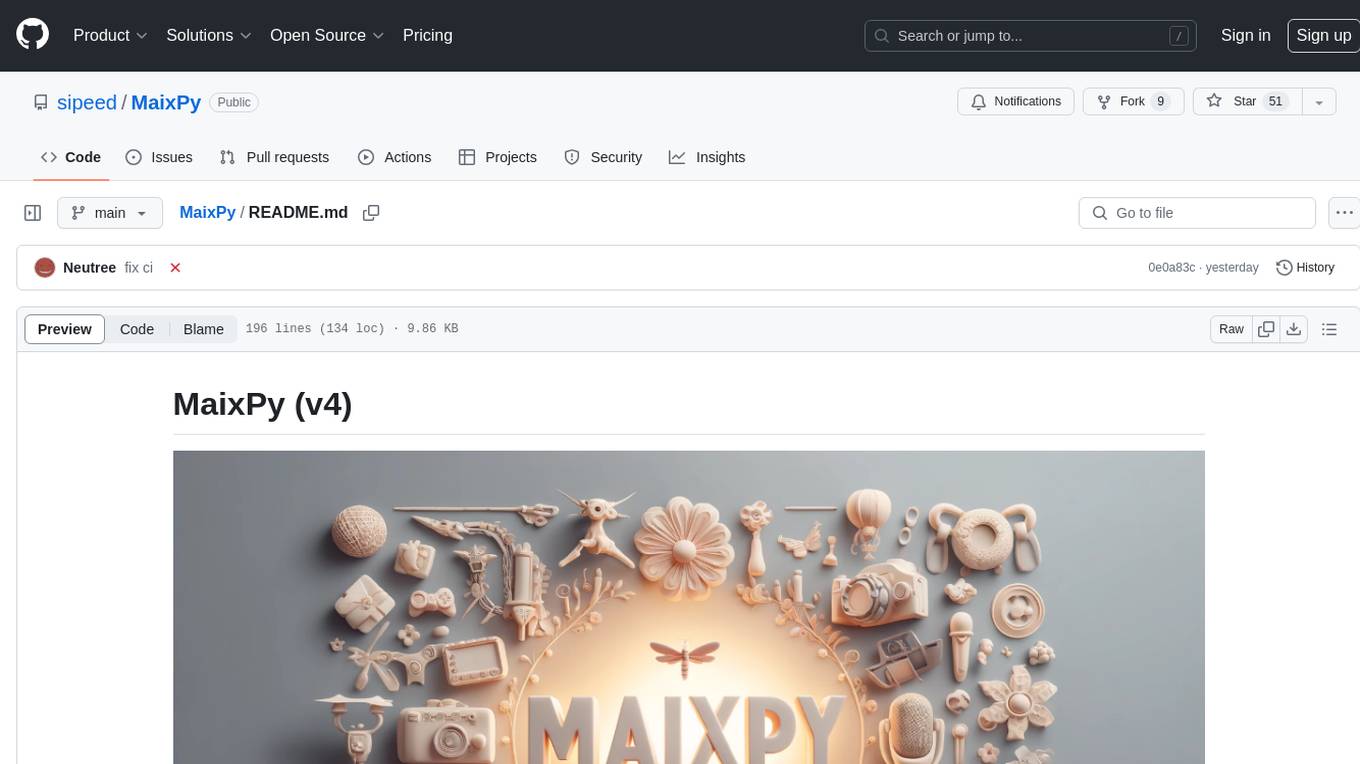
MaixPy
MaixPy is a Python SDK that enables users to easily create AI vision projects on edge devices. It provides a user-friendly API for accessing NPU, making it suitable for AI Algorithm Engineers, STEM teachers, Makers, Engineers, Students, Enterprises, and Contestants. The tool supports Python programming, MaixVision Workstation, AI vision, video streaming, voice recognition, and peripheral usage. It also offers an online AI training platform called MaixHub. MaixPy is designed for new hardware platforms like MaixCAM, offering improved performance and features compared to older versions. The ecosystem includes hardware, software, tools, documentation, and a cloud platform.
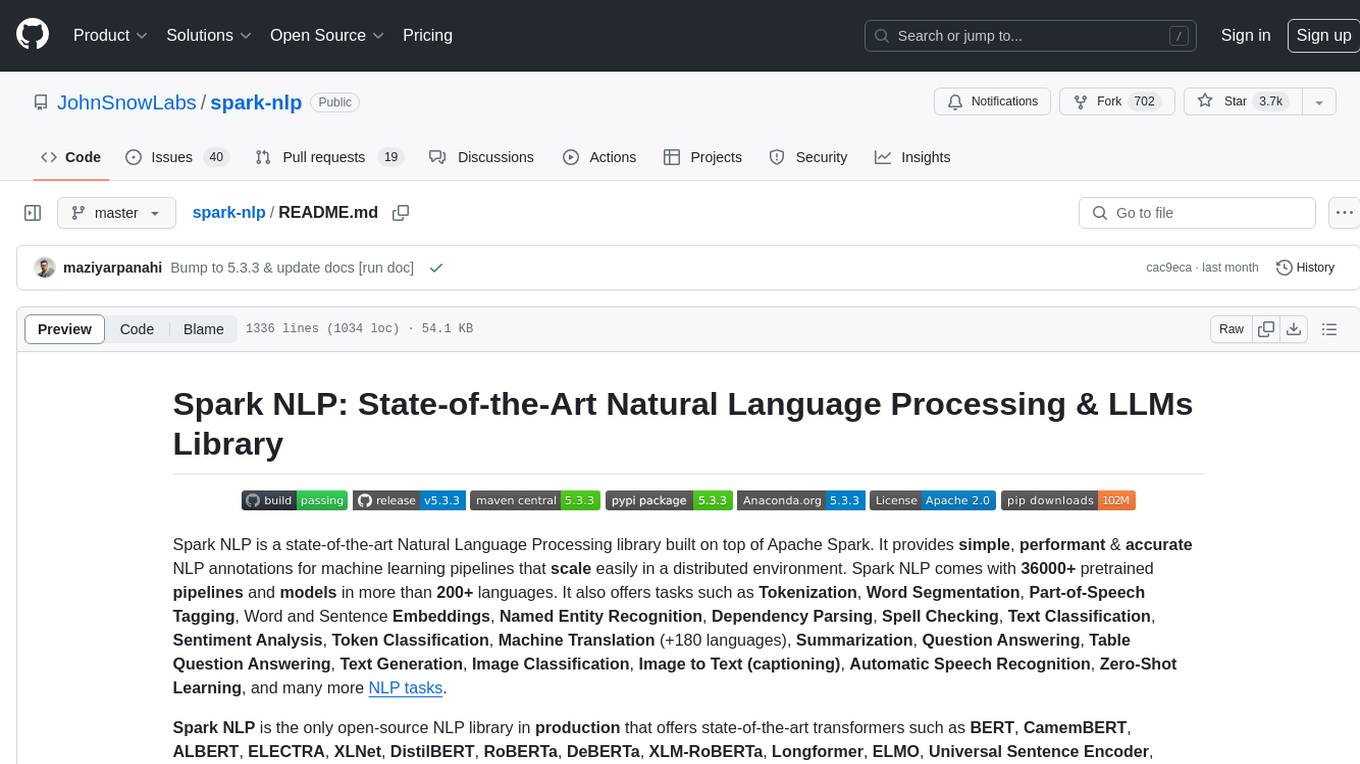
spark-nlp
Spark NLP is a state-of-the-art Natural Language Processing library built on top of Apache Spark. It provides simple, performant, and accurate NLP annotations for machine learning pipelines that scale easily in a distributed environment. Spark NLP comes with 36000+ pretrained pipelines and models in more than 200+ languages. It offers tasks such as Tokenization, Word Segmentation, Part-of-Speech Tagging, Named Entity Recognition, Dependency Parsing, Spell Checking, Text Classification, Sentiment Analysis, Token Classification, Machine Translation, Summarization, Question Answering, Table Question Answering, Text Generation, Image Classification, Image to Text (captioning), Automatic Speech Recognition, Zero-Shot Learning, and many more NLP tasks. Spark NLP is the only open-source NLP library in production that offers state-of-the-art transformers such as BERT, CamemBERT, ALBERT, ELECTRA, XLNet, DistilBERT, RoBERTa, DeBERTa, XLM-RoBERTa, Longformer, ELMO, Universal Sentence Encoder, Llama-2, M2M100, BART, Instructor, E5, Google T5, MarianMT, OpenAI GPT2, Vision Transformers (ViT), OpenAI Whisper, and many more not only to Python and R, but also to JVM ecosystem (Java, Scala, and Kotlin) at scale by extending Apache Spark natively.
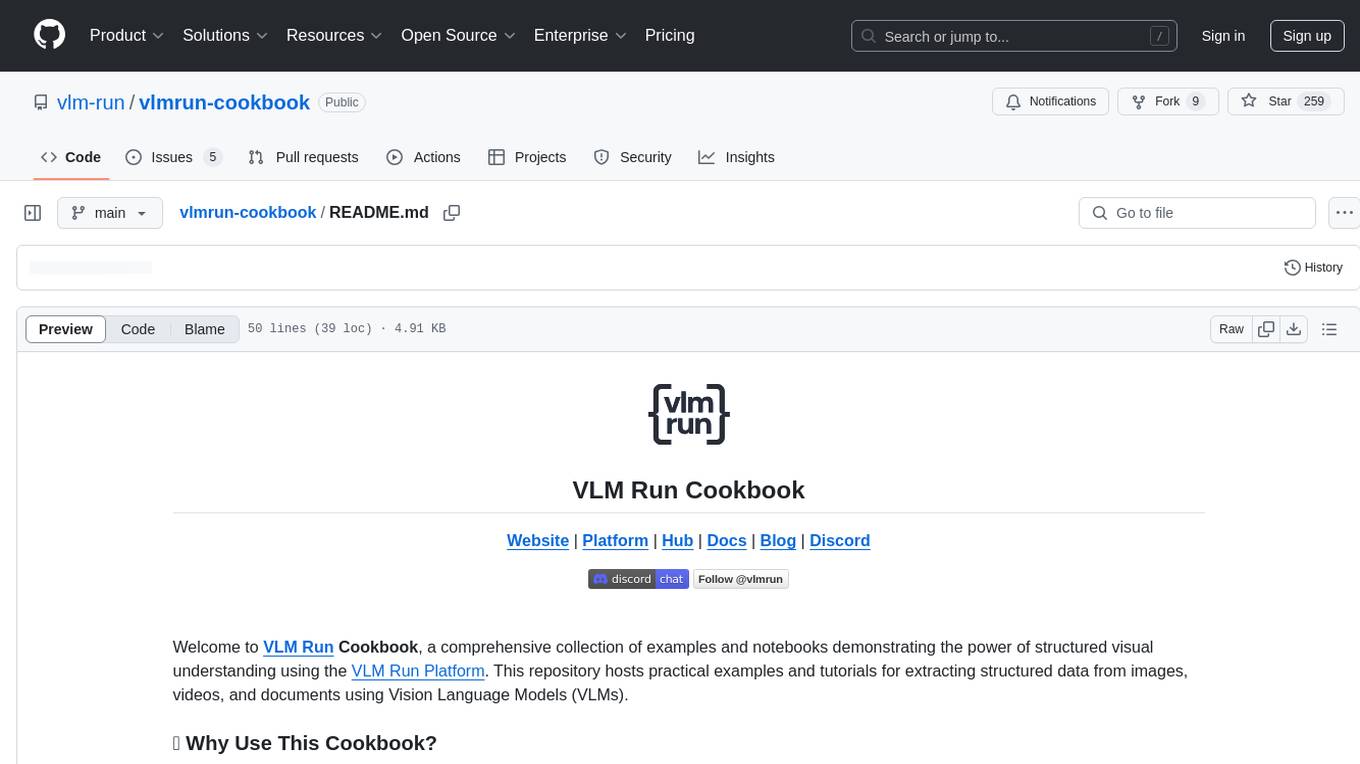
vlmrun-cookbook
VLM Run Cookbook is a repository containing practical examples and tutorials for extracting structured data from images, videos, and documents using Vision Language Models (VLMs). It offers comprehensive Colab notebooks demonstrating real-world applications of VLM Run, with complete code and documentation for easy adaptation. The examples cover various domains such as financial documents and TV news analysis.
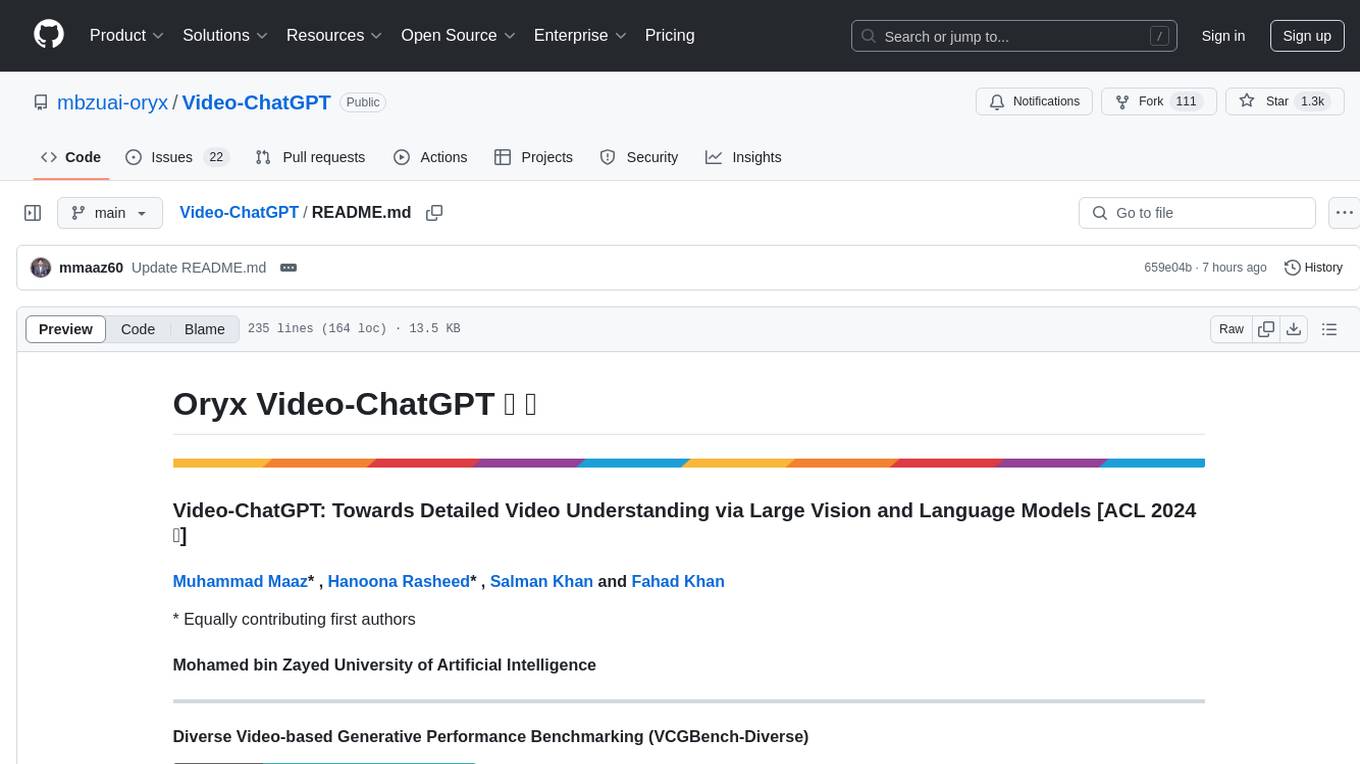
Video-ChatGPT
Video-ChatGPT is a video conversation model that aims to generate meaningful conversations about videos by combining large language models with a pretrained visual encoder adapted for spatiotemporal video representation. It introduces high-quality video-instruction pairs, a quantitative evaluation framework for video conversation models, and a unique multimodal capability for video understanding and language generation. The tool is designed to excel in tasks related to video reasoning, creativity, spatial and temporal understanding, and action recognition.
For similar tasks

langtrace
Langtrace is an open source observability software that lets you capture, debug, and analyze traces and metrics from all your applications that leverage LLM APIs, Vector Databases, and LLM-based Frameworks. It supports Open Telemetry Standards (OTEL), and the traces generated adhere to these standards. Langtrace offers both a managed SaaS version (Langtrace Cloud) and a self-hosted option. The SDKs for both Typescript/Javascript and Python are available, making it easy to integrate Langtrace into your applications. Langtrace automatically captures traces from various vendors, including OpenAI, Anthropic, Azure OpenAI, Langchain, LlamaIndex, Pinecone, and ChromaDB.
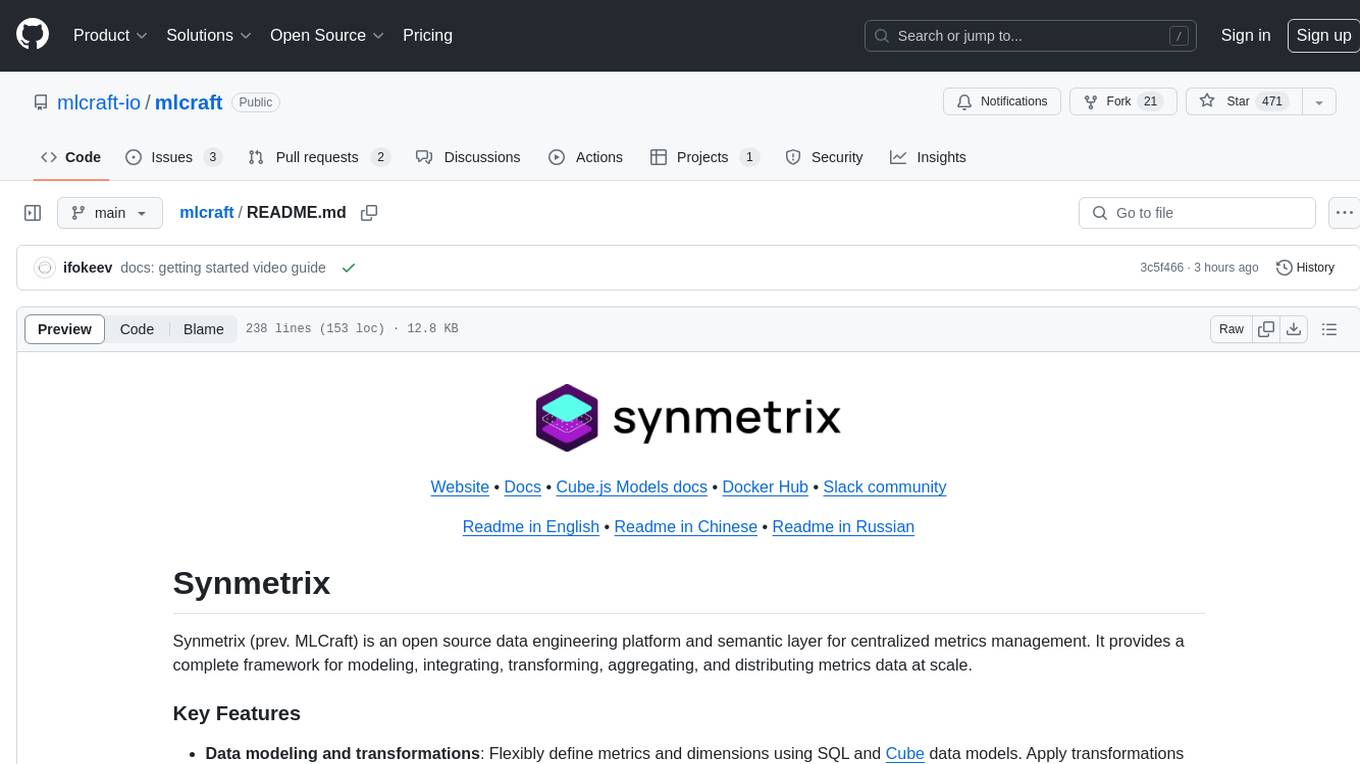
mlcraft
Synmetrix (prev. MLCraft) is an open source data engineering platform and semantic layer for centralized metrics management. It provides a complete framework for modeling, integrating, transforming, aggregating, and distributing metrics data at scale. Key features include data modeling and transformations, semantic layer for unified data model, scheduled reports and alerts, versioning, role-based access control, data exploration, caching, and collaboration on metrics modeling. Synmetrix leverages Cube (Cube.js) for flexible data models that consolidate metrics from various sources, enabling downstream distribution via a SQL API for integration into BI tools, reporting, dashboards, and data science. Use cases include data democratization, business intelligence, embedded analytics, and enhancing accuracy in data handling and queries. The tool speeds up data-driven workflows from metrics definition to consumption by combining data engineering best practices with self-service analytics capabilities.
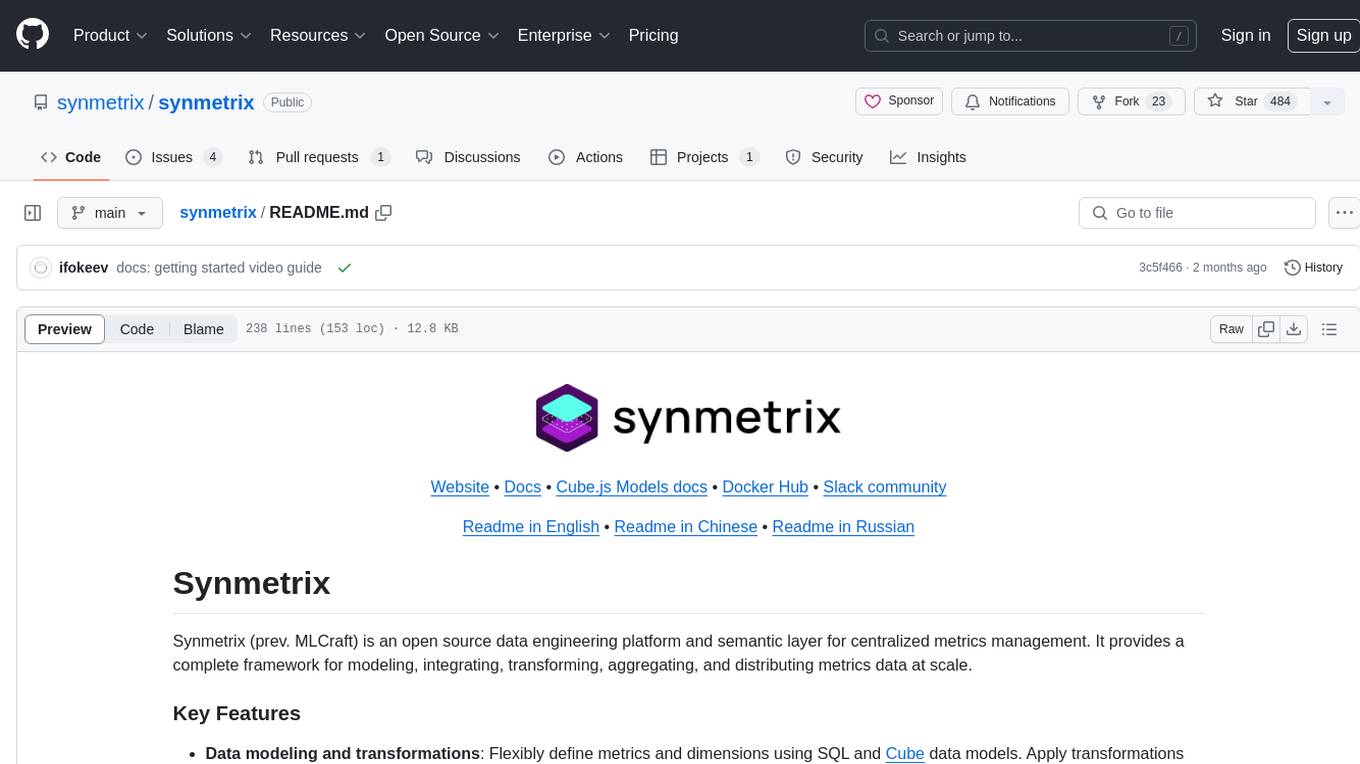
synmetrix
Synmetrix is an open source data engineering platform and semantic layer for centralized metrics management. It provides a complete framework for modeling, integrating, transforming, aggregating, and distributing metrics data at scale. Key features include data modeling and transformations, semantic layer for unified data model, scheduled reports and alerts, versioning, role-based access control, data exploration, caching, and collaboration on metrics modeling. Synmetrix leverages Cube.js to consolidate metrics from various sources and distribute them downstream via a SQL API. Use cases include data democratization, business intelligence and reporting, embedded analytics, and enhancing accuracy in data handling and queries. The tool speeds up data-driven workflows from metrics definition to consumption by combining data engineering best practices with self-service analytics capabilities.
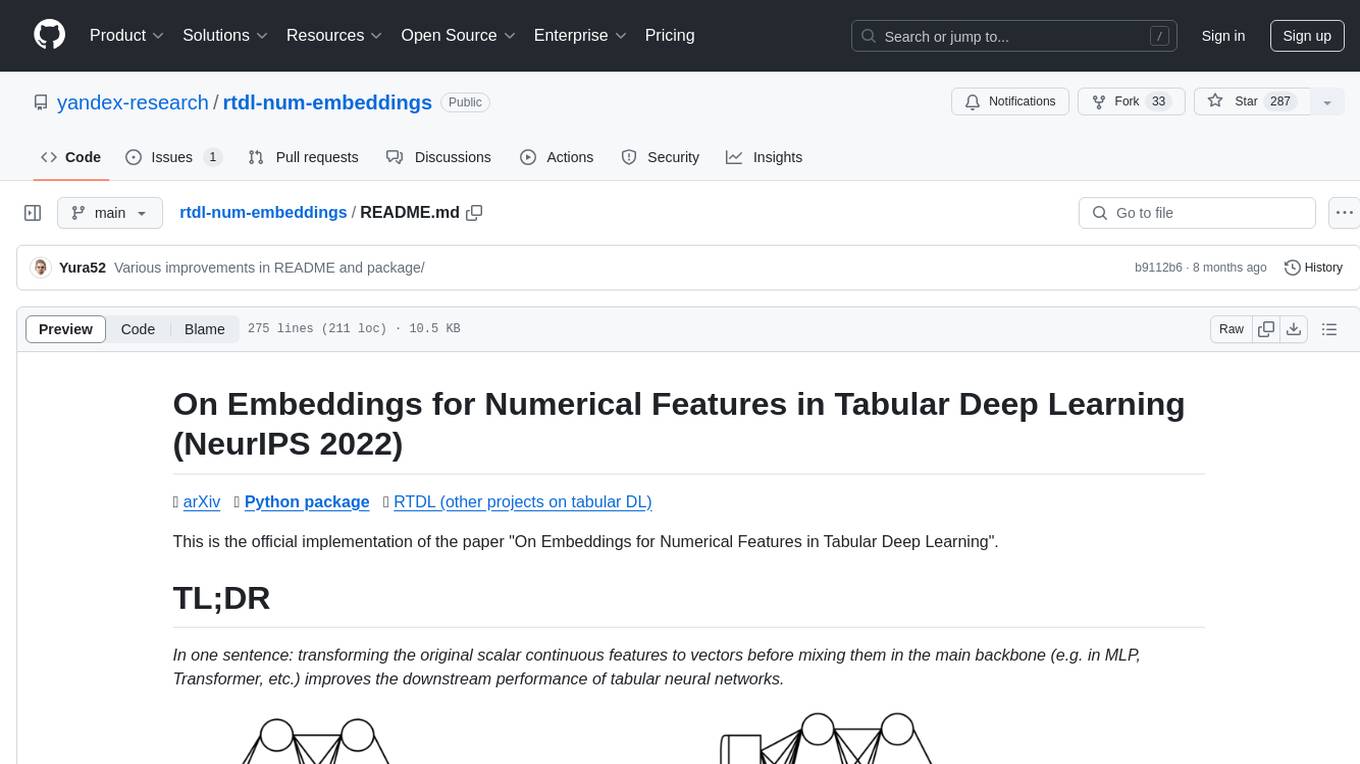
rtdl-num-embeddings
This repository provides the official implementation of the paper 'On Embeddings for Numerical Features in Tabular Deep Learning'. It focuses on transforming scalar continuous features into vectors before integrating them into the main backbone of tabular neural networks, showcasing improved performance. The embeddings for continuous features are shown to enhance the performance of tabular DL models and are applicable to various conventional backbones, offering efficiency comparable to Transformer-based models. The repository includes Python packages for practical usage, exploration of metrics and hyperparameters, and reproducing reported results for different algorithms and datasets.
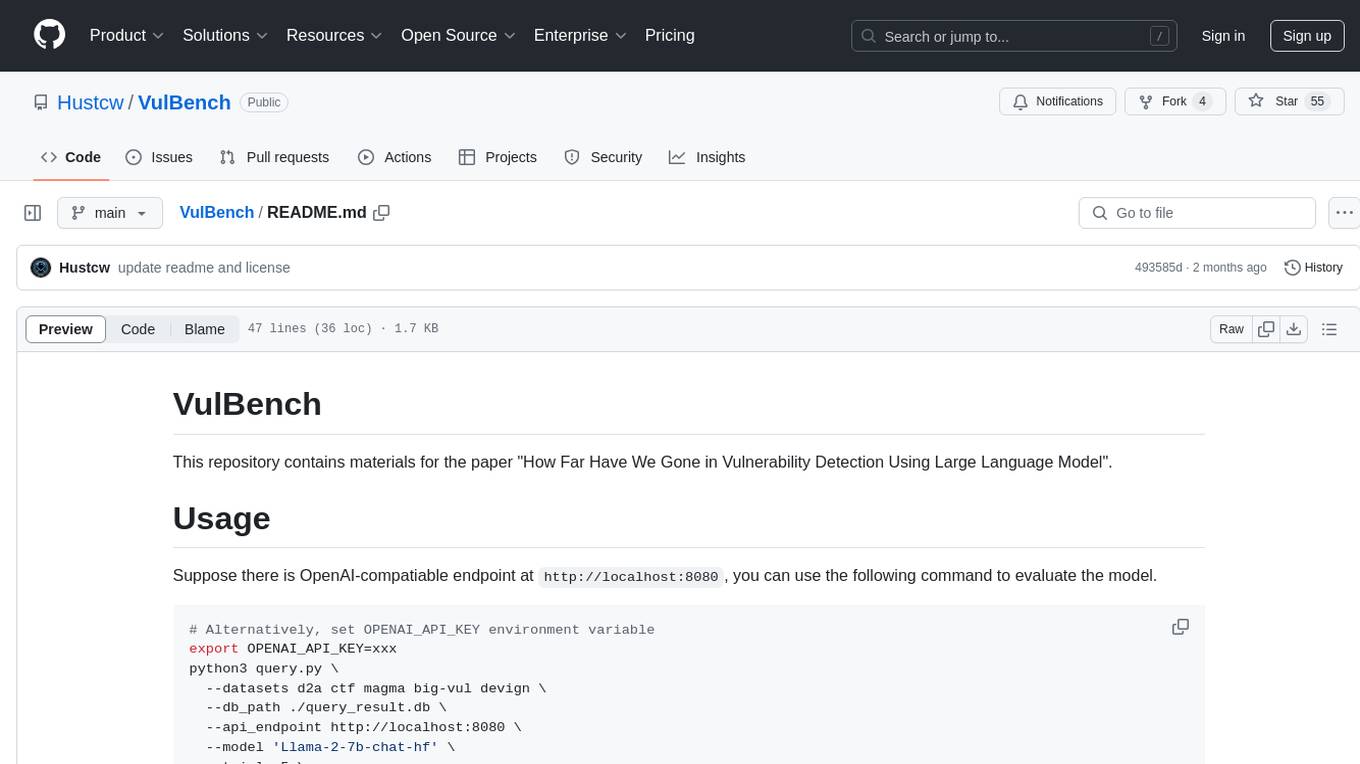
VulBench
This repository contains materials for the paper 'How Far Have We Gone in Vulnerability Detection Using Large Language Model'. It provides a tool for evaluating vulnerability detection models using datasets such as d2a, ctf, magma, big-vul, and devign. Users can query the model 'Llama-2-7b-chat-hf' and store results in a SQLite database for analysis. The tool supports binary and multiple classification tasks with concurrency settings. Additionally, users can evaluate the results and generate a CSV file with metrics for each dataset and prompt type.
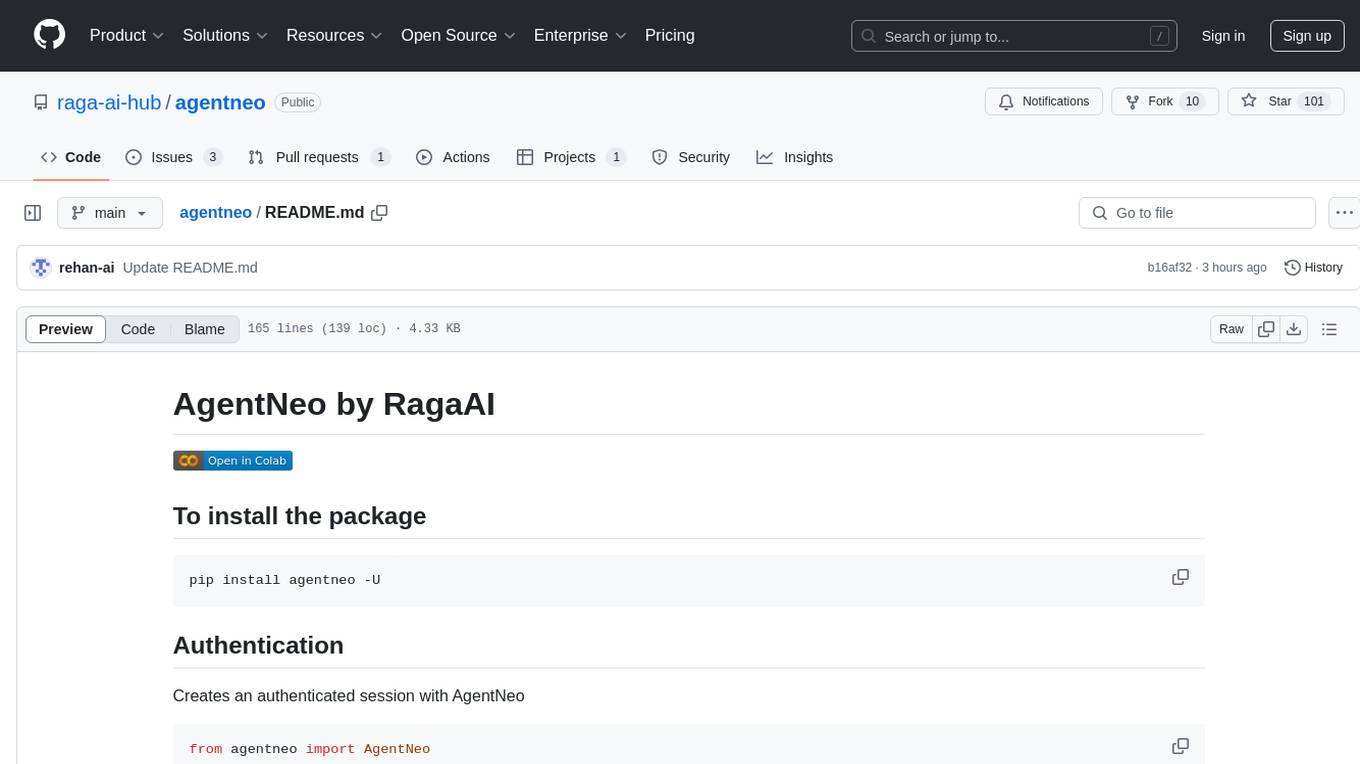
agentneo
AgentNeo is a Python package that provides functionalities for project, trace, dataset, experiment management. It allows users to authenticate, create projects, trace agents and LangGraph graphs, manage datasets, and run experiments with metrics. The tool aims to streamline AI project management and analysis by offering a comprehensive set of features.
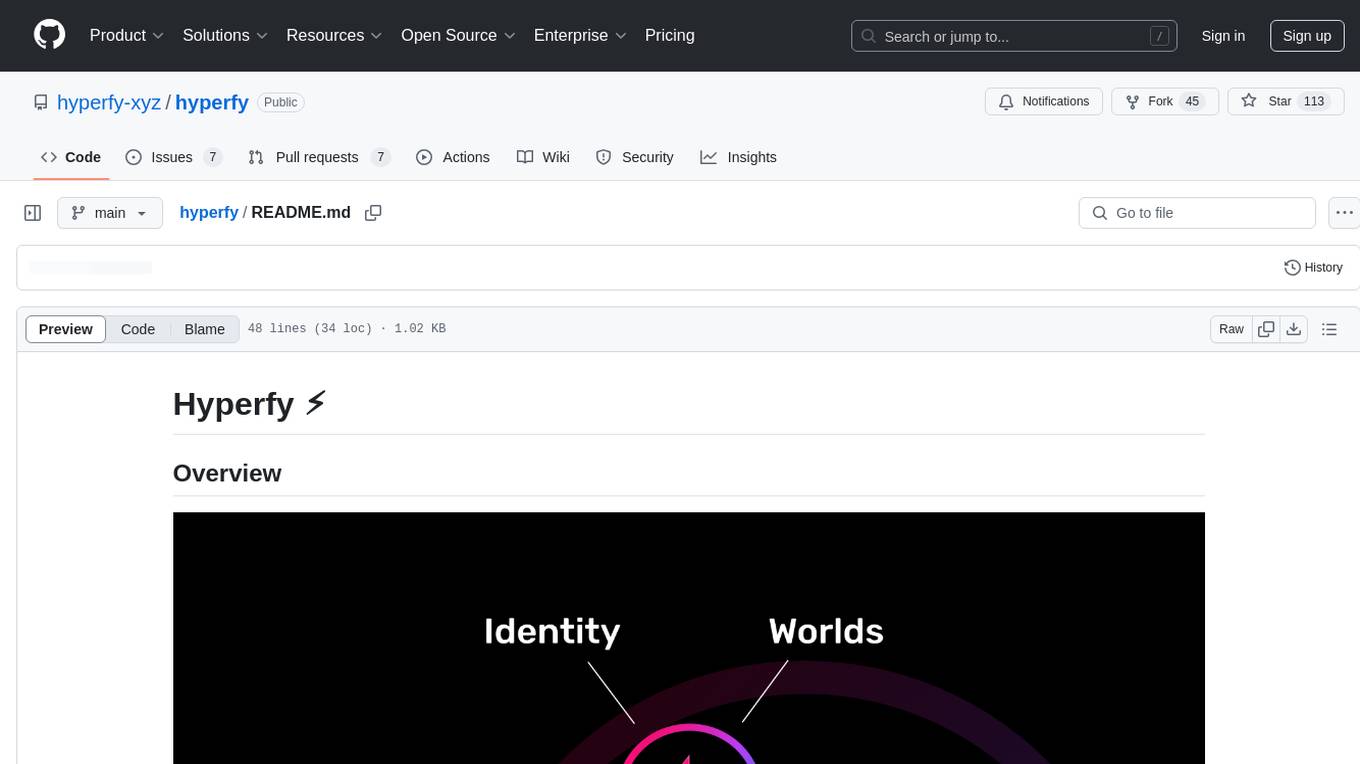
hyperfy
Hyperfy is a powerful tool for automating social media marketing tasks. It provides a user-friendly interface to schedule posts, analyze performance metrics, and engage with followers across multiple platforms. With Hyperfy, users can save time and effort by streamlining their social media management processes in one centralized platform.
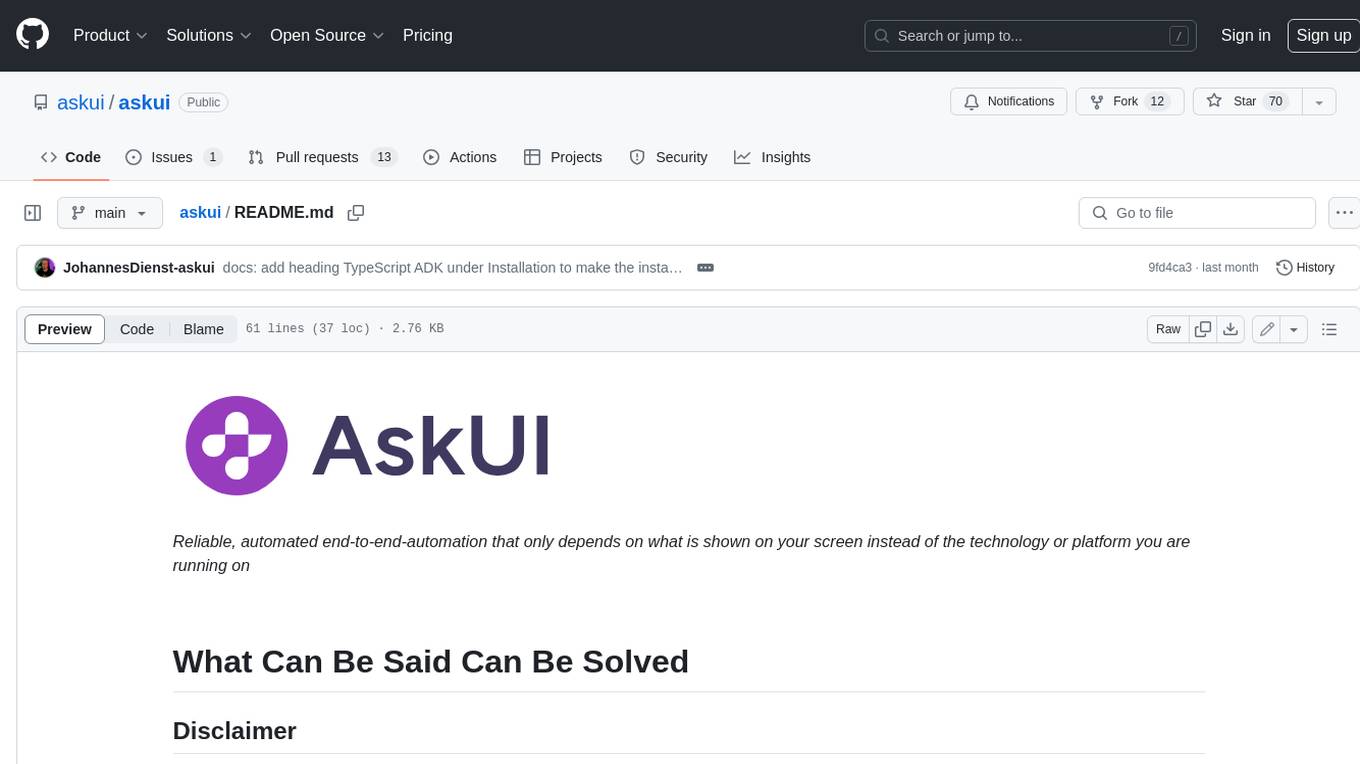
askui
AskUI is a reliable, automated end-to-end automation tool that only depends on what is shown on your screen instead of the technology or platform you are running on.
For similar jobs

weave
Weave is a toolkit for developing Generative AI applications, built by Weights & Biases. With Weave, you can log and debug language model inputs, outputs, and traces; build rigorous, apples-to-apples evaluations for language model use cases; and organize all the information generated across the LLM workflow, from experimentation to evaluations to production. Weave aims to bring rigor, best-practices, and composability to the inherently experimental process of developing Generative AI software, without introducing cognitive overhead.

agentcloud
AgentCloud is an open-source platform that enables companies to build and deploy private LLM chat apps, empowering teams to securely interact with their data. It comprises three main components: Agent Backend, Webapp, and Vector Proxy. To run this project locally, clone the repository, install Docker, and start the services. The project is licensed under the GNU Affero General Public License, version 3 only. Contributions and feedback are welcome from the community.

oss-fuzz-gen
This framework generates fuzz targets for real-world `C`/`C++` projects with various Large Language Models (LLM) and benchmarks them via the `OSS-Fuzz` platform. It manages to successfully leverage LLMs to generate valid fuzz targets (which generate non-zero coverage increase) for 160 C/C++ projects. The maximum line coverage increase is 29% from the existing human-written targets.

LLMStack
LLMStack is a no-code platform for building generative AI agents, workflows, and chatbots. It allows users to connect their own data, internal tools, and GPT-powered models without any coding experience. LLMStack can be deployed to the cloud or on-premise and can be accessed via HTTP API or triggered from Slack or Discord.

VisionCraft
The VisionCraft API is a free API for using over 100 different AI models. From images to sound.

kaito
Kaito is an operator that automates the AI/ML inference model deployment in a Kubernetes cluster. It manages large model files using container images, avoids tuning deployment parameters to fit GPU hardware by providing preset configurations, auto-provisions GPU nodes based on model requirements, and hosts large model images in the public Microsoft Container Registry (MCR) if the license allows. Using Kaito, the workflow of onboarding large AI inference models in Kubernetes is largely simplified.

PyRIT
PyRIT is an open access automation framework designed to empower security professionals and ML engineers to red team foundation models and their applications. It automates AI Red Teaming tasks to allow operators to focus on more complicated and time-consuming tasks and can also identify security harms such as misuse (e.g., malware generation, jailbreaking), and privacy harms (e.g., identity theft). The goal is to allow researchers to have a baseline of how well their model and entire inference pipeline is doing against different harm categories and to be able to compare that baseline to future iterations of their model. This allows them to have empirical data on how well their model is doing today, and detect any degradation of performance based on future improvements.

Azure-Analytics-and-AI-Engagement
The Azure-Analytics-and-AI-Engagement repository provides packaged Industry Scenario DREAM Demos with ARM templates (Containing a demo web application, Power BI reports, Synapse resources, AML Notebooks etc.) that can be deployed in a customer’s subscription using the CAPE tool within a matter of few hours. Partners can also deploy DREAM Demos in their own subscriptions using DPoC.








